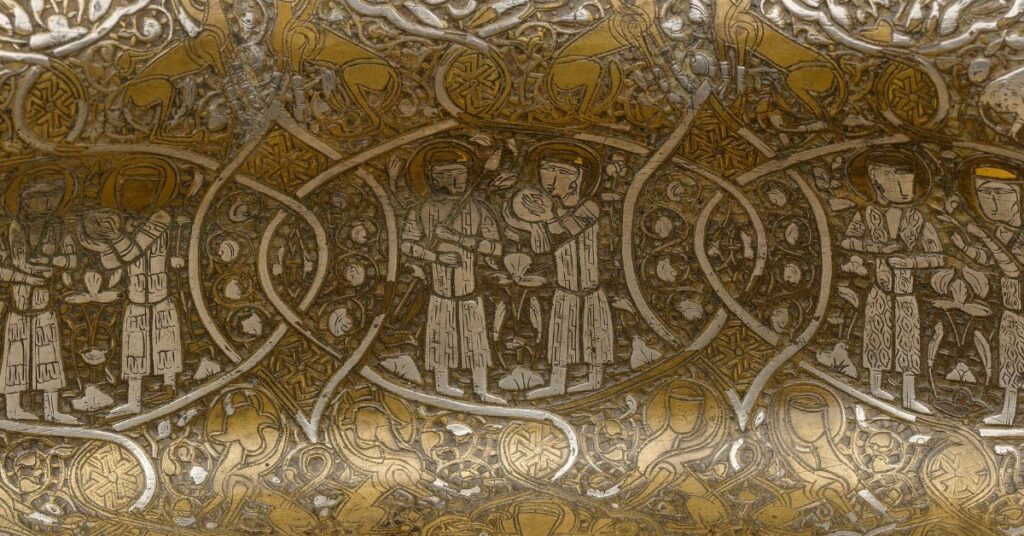Definition of Imagery
Imagery refers to figurative language; it is a powerful literary tool because it enables the writer to create strong mental images of their ideas in the reader’s mind. By using this powerful figure of speech, poets and writers appeal to the reader’s five senses and their feelings and internal emotions.
For example, in his book, The Archer, Paulo Coelho uses imagery as a literary device to connect the readers with his distinct ideas about the arrow and its relevance to life.
By appealingly using figurative language, the writer allows the readers to dive deep into his philosophy about life in reaction to his description of using the arrow righteously. The image of the arrow marks the center of the text as it connects the audience with the writer’s perception about life and how to spend it. Paulo’s use of specific images appeals to the audience’s understanding of life and its problems.
Common Examples of Imagery
Imagery is not confined to books; people use imagery in everyday speech to communicate thoughts, feelings, and ideas using descriptive language. Some of the common examples of imagery are as follows.
- Taste:
I entered the shop because it smells like a yummy cake. - Sound:
The music in his friend’s house was so loud that his ears rang for days afterwards. - Sight:
The exotic view of the Antrim waterfall brought delight to the eyes. - Smell:
After tasting a spicy Asian Food, his breath reeked of strong spices. - Touch:
The scorching heat of the sun was irritating for her sensitive skin.
Significance of Imagery in Literature
Imagery is frequently used in almost all types of literature that exist in the world. Novelists, poets, and playwrights use this engaging device to bring life to their words. Its usage in the text can create mood and set the appropriate tone for the readers, such as, in his poem, “The Panic Bird”, Robert Philips uses the image of a bird to make his readers picture the kind of pain he feels because of depression. Similarly, Shakespeare also used a strong image of three witches in his famous play, Macbeth. The image of the three witches, in the beginning, allows the readers to visualize the kind of setting in which the story may take place. Therefore, while analyzing any piece of literature, it is important to pay heed to the imagery used to hook the reader.

Examples of Imagery in Literature
Although the imagery is often associated with poetry, it is used effectively in all forms of writing, from novels to short stories and essays. Writers use this device to communicate their perceptions on a memorable and more profound level with the audience. Imagery helps the audience to construct a sensory impression of what the writer intends to describe through words. In addition, the perfect use of imagery showcases the writer’s mastery of flowery language, which also adds more profound meaning to their seemingly simple texts.
Following are some of the examples of imagery in literature.
Example 1
“The Panic Bird” by Robert Philips
In these stanzas of the poem, Robert uses images to appeal to the reader’s senses and emotions, and feelings. The reader can easily picture the miserable condition of the speaker being hooked by anxiety and depression. By utilizing relevant images, the writer makes his readers feel and imagine the helplessness of those who suffer at the hands of problems. As the speaker describes his disturbed mental state, the reader can quickly empathize with the speaker whose conscious is locked in absolute darkness. The image of the caged bird evokes gruesome and pathetic feelings for the reader, undermining the inadequacy of the writer living amid chaos.
Example 2:
“The Giving Tree” by Shel Silverstein
In this passage of her poem, “The Giving Tree,” Shel Silverstein uses captivating images of a tree and a boy to grab the reader’s attention from the start. The writer’s imagery effectively appeals to the audience’s sense of sight. The depiction of a dead tree as a motherly figure for the lonely boy evokes an emotional response in the reader’s mind. In addition to the emotional response, the figurative language describes the tree’s relationship with the boy and enhances its symbolic presence in the poem.
Example 3:
“Messy Room” by Shel Silverstein
In the above-stated lines of the poem, “Messy Room”, the writer uses appealing and familiar images to connect with the world we share. Almost everyone around the globe does understand the imagery described in this passage. The use of this powerful poetic element has allowed the writer to play with her reader’s imagination. In addition, the image of a messy room and its funny description shakes the readers emotionally and brings them a joyous piece to enjoy.
Conclusion
To sum up, imagery is a powerful literary tool used in all forms of writing to amuse the readers with the writer’s ideas, feelings, and emotions.
See Also:

